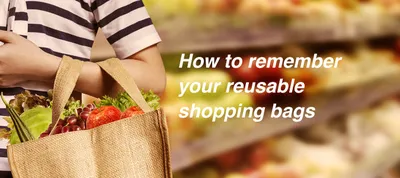The Slow Clothing way to manage your wardrobe

Slow Clothing is a way of thinking about and choosing clothes to ensure they bring meaning, value and joy to every day. It is about thoughtful, ethical, creative and sustainable ways of dressing while minimising our material footprint on the world.
Jane Milburn is a sustainability consultant and founder of Textile Beat. She upcycled a career in agricultural science and communications to champion Slow Clothing as a creative and ethical way of dressing that engages hands, head and heart. Jane has generously agreed to share this edited extract from her book, Slow Clothing: Finding meaning in what we wear.
"Show up as your natural, authentic self - anything else is contrived"
- Jane Milburn
Slow Clothing is a way of thinking about and choosing clothes to ensure they bring meaning, value and joy to every day. It is about thoughtful, ethical, creative and sustainable ways of dressing while minimising our material footprint on the world.
With rising international concerns about the state of planetary health, it is time to consider how we can adapt every day practices of eating, dressing and working to be more sustainable. While we particularly focus here on dressing, reflecting on consumption choices is relevant across all aspects of life because nothing should be bought without thought.
There are still only 365 days in the year, yet we may have up to four times the clothing we once did. Most of us (62%) have clothes in our wardrobe that have never been worn and about 23% is never or rarely worn, according to an Australian study.
During our lifetime, our style, shape and needs change. We go through stages of searching for newer, fresher looks and may use clothes to camouflage ourselves or attract attention. Or, we might choose one style or colour to become our uniform.
Hopefully as we move through life, we shed the idea of perfection and learn to embrace clothes as friends that enable us to express our authentic self. This happens when we stop comparing ourselves with others and let go of the culture of envy which luxury fashion marketers plan on, and prey on.
By developing self-awareness, we can create an independent style that reflects our uniqueness, our kansei. We can cherry-pick ideas from what we see around us, but need not be beholden to them.
Slow clothing values personal connection to garments through the stories and memories they hold. It considers the ethics and sustainability of our garments, their comfort and longevity, and our desire to be more engaged with the making process.
Slow Clothing strategies
The clothes we choose make a statement of who we are. They are a big part of our lives because we dress at least once a day. Clothes can cause us stress, clutter up our living space and soak up time.
There is no one way to go about restructuring your wardrobe collection. We arrive at our own solution, based on our age and stage. At all stages though, less is indeed more.
Here's my suggested process for action:
- Stop buying for a while
A period of not buying gives you space to think about what you already own, and how much you really need.
- Study your style - shape, colour, image
We can all create our own individual style. Developing your own style is a personal journey. When you become confident in your own style, you are no longer a slave to fashion trends.
Shape: accept and embrace who you are. There are ways to play up and play down various body parts, so check in with a stylist or image consultant if you aren't sure.
Colour: The colour tone of our skin has a huge influence on what clothing colours work best for us. When you know your best colours, you can factor it in, particularly when making investment purchases.
Image: This will vary depending on the work you are doing at the time. There are two genres that reflect personality types: the contained look which is more fitted and neat and uses colour judiciously; and the expressive look which is more free-form, with random hems and more creative shapes and colours. Go with your heart - which garments make you feel good.
- Sort and curate existing wardrobe
Examine what you already have and consider what you want to shed, repair, refashion or put in storage. For the initial sort, create piles: keep, mend/adjust, donate, cut-up and bin. To help with decision-making, set aside some time to try on and experiment with different combinations of tops and bottoms. Arrange the treasures you are keeping in a way that works for you.
- Seek out responsible choices
The challenge now is to make every future purchase a winner that will serve you well. You will feel better when you dress with conscience, in clothes that have a good story about how they came to be in your wardrobe. Buy on ethics, not on price. Aim to buy second hand first: it is a great way to test what works best for you and to try new styles for little outlay.
Once you have your existing wardrobe honed, you can move forward with the Slow Clothing Manifesto's 10 actions for being more conscious of what we wear.
Read more about Jane's slow clothing projects, DIY stitching, mending and creative upcycling techniques in her book, Slow Clothing: Finding meaning in what we wear, available for purchase from Textile Beat.







